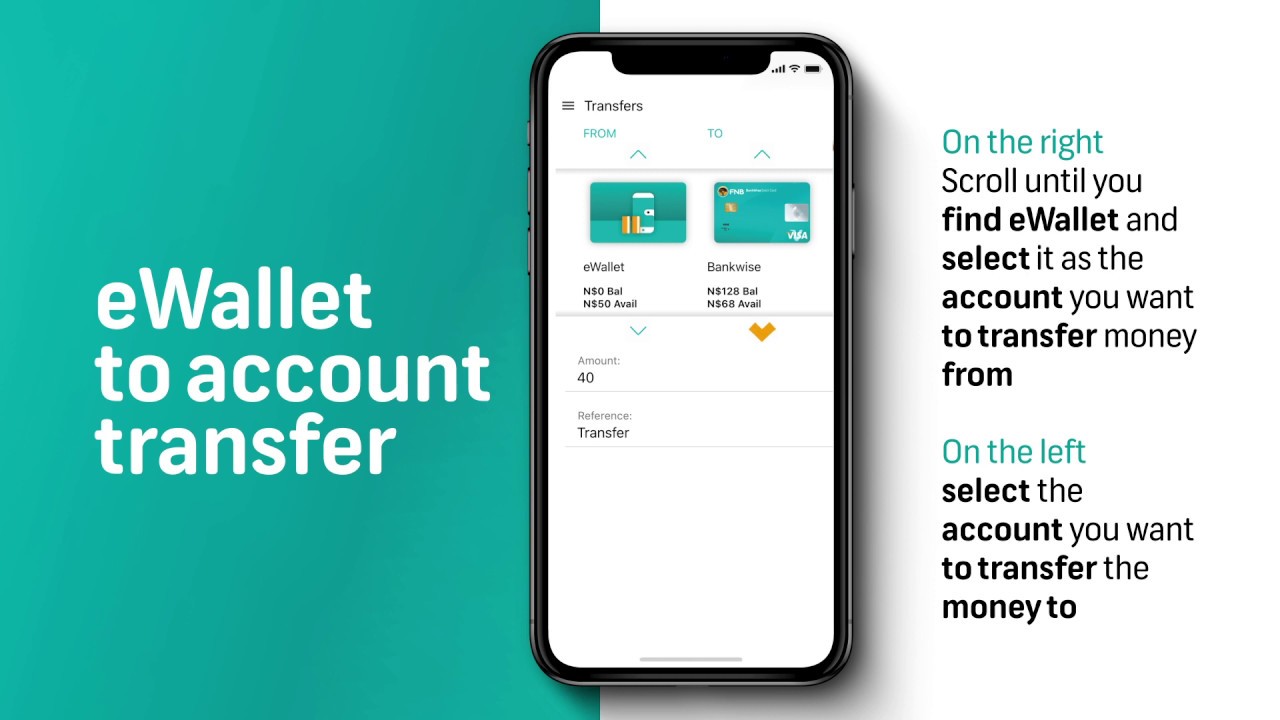Introduction
Welcome to the digital age where almost everything can be done with a few clicks of a button. One area that has seen significant transformation is banking. With the rapid advancement of technology, traditional banking has evolved into a more convenient and efficient form known as e-banking. In this article, we will explore what e-banking is and the various benefits, types, and features it offers.
E-banking, also known as electronic banking or online banking, refers to the provision of banking services through electronic channels such as the internet, mobile applications, or other digital platforms. It allows customers to carry out financial transactions and access banking services anytime and anywhere, without the need to visit a physical branch.
With e-banking, individuals can perform a wide range of banking activities, including checking account balances, transferring funds, paying bills, applying for loans, and even investing in financial products. The convenience of e-banking has made it increasingly popular among consumers, as it eliminates the need for traditional paper-based transactions and saves valuable time.
Today, most banks offer e-banking services to their customers, enabling them to manage their finances efficiently and securely. Whether it’s a small local bank or a large multinational institution, e-banking has become an integral part of their operations. The widespread adoption of e-banking is driven by several factors, including technological advancements, increased internet penetration, and the growing demand for convenient banking services.
However, while e-banking offers numerous benefits, it also comes with its own set of challenges. As with any digital platform, security concerns such as online fraud and identity theft are always a potential risk. Banks and financial institutions employ various security measures to protect their customers’ information, but it’s important for users to be cautious and take necessary precautions to safeguard their personal data.
In the following sections, we will delve deeper into the concept of e-banking, explore the different types of e-banking services, discuss how it works, and highlight the key features and security measures associated with this digital banking phenomenon. Let’s embark on this journey to discover the world of e-banking and its impact on the way we manage our finances.
What is E-Banking?
E-banking, short for electronic banking, refers to the use of electronic channels and platforms to conduct various banking activities. It allows individuals to access and manage their financial accounts remotely, without the need to physically visit a bank branch. E-banking encompasses a wide range of services and transactions, providing customers with convenience, flexibility, and efficiency in managing their finances.
One of the fundamental aspects of e-banking is the provision of online access to bank accounts. Customers can view their account balances, transaction history, and other details through secure online portals provided by their banks. This real-time access to account information is a key advantage of e-banking, enabling individuals to monitor their finances and make informed financial decisions.
In addition to account access, e-banking allows customers to perform various transactions electronically. This includes transferring funds between accounts, paying bills, setting up automatic payments, and initiating wire transfers. With just a few clicks, individuals can easily move money between different accounts or make payments without the need for writing checks or visiting physical branches.
Furthermore, e-banking also offers features such as mobile banking applications, which allow customers to access their banking services using smartphones and tablets. These mobile apps provide a user-friendly interface, allowing users to perform transactions on the go, check account balances, receive important notifications, and even deposit checks remotely using the device’s camera.
E-banking goes beyond basic banking services and also includes additional features such as online loan applications, investment management, and financial planning tools. Customers can apply for loans online, submit necessary documents electronically, and track the progress of their loan applications. Similarly, individuals can use e-banking platforms to invest in various financial products, such as stocks, mutual funds, and bonds, with access to real-time market information and analysis.
Overall, e-banking revolutionizes the way individuals interact with their banks and manage their finances. It offers convenience, accessibility, and a wide range of services that empower customers to take control of their financial well-being. As technology continues to advance, e-banking is expected to evolve further, introducing new innovative features and enhancing customer experience. Embracing e-banking can truly simplify and streamline the way we handle our financial needs.
Benefits of E-Banking
E-banking offers numerous benefits that enhance the banking experience for customers. By leveraging technology and digital platforms, e-banking has transformed the way individuals manage their finances. Here are some key advantages of e-banking:
- Convenience: One of the primary benefits of e-banking is the convenience it provides. Customers can access their accounts and perform transactions 24/7 from the comfort of their homes or on the go. There is no need to visit a physical branch or adhere to traditional banking hours. E-banking allows individuals to bank at their convenience, saving them time and effort.
- Accessibility: E-banking has made banking services accessible to a wider range of individuals. It eliminates geographical limitations and enables customers to access their accounts and services from anywhere in the world, as long as they have an internet connection. This is particularly beneficial for frequent travelers or individuals residing in remote areas where physical branches may be limited.
- Cost-effective: E-banking can help customers save money by reducing certain costs associated with traditional banking. With e-banking, there is no need to incur expenses for paper checks, postage, or in-person visits. Additionally, many banks offer lower fees or even fee-free accounts for customers who primarily use e-banking services.
- Time-saving: E-banking allows customers to perform banking activities quickly and efficiently. Transactions that would typically require a trip to the bank can now be completed within minutes online. Whether it’s transferring funds, paying bills, or applying for a loan, e-banking eliminates time-consuming processes, enabling individuals to manage their finances efficiently.
- Enhanced control and monitoring: E-banking provides customers with a high level of control over their finances. Users can easily monitor their account balances, view transaction history, and set up customized alerts to receive notifications for significant account activities. This level of control allows individuals to stay on top of their finances and detect any fraudulent activities promptly.
- Improved financial management: E-banking platforms often provide robust tools for financial management. Customers can categorize expenses, set budget goals, and access personalized financial insights. These features facilitate better financial planning and help individuals make informed decisions about their money.
- Environmental friendliness: E-banking significantly reduces the need for paper-based transactions, which contributes to a more sustainable and eco-friendly banking system. By reducing the consumption of paper checks, statements, and other documents, e-banking helps to conserve natural resources and minimize carbon footprint.
These benefits make e-banking an attractive option for individuals seeking convenience, accessibility, and efficient financial management. As technology advances, e-banking will continue to evolve, bringing even more advantages and innovative features to revolutionize the banking industry.
Types of E-Banking Services
E-banking encompasses a wide range of services designed to meet the diverse financial needs of customers. Here are some common types of e-banking services:
- Online Banking: Online banking is the most common form of e-banking that allows customers to access their accounts and perform various banking transactions through a secure online portal provided by their bank. Users can check account balances, view transaction history, transfer funds between accounts, pay bills, and more, all through the internet.
- Mobile Banking: Mobile banking refers to the use of mobile applications provided by banks to access banking services and perform transactions through smartphones and tablets. Mobile banking apps provide a convenient and user-friendly interface, allowing users to manage their finances on the go. Features can include account balance inquiry, fund transfers, mobile deposits, bill payments, and even personalized financial insights.
- ATM Banking: Automated Teller Machines (ATMs) play a crucial role in e-banking. Customers can use ATMs to withdraw cash and perform other transactions such as depositing checks or transferring funds between accounts. ATMs provide round-the-clock access and are particularly useful for individuals who prefer physical cash or need quick access to basic banking services.
- Telephone Banking: Telephone banking enables customers to access banking services and perform transactions over the phone. Users can connect with a customer service representative or an interactive voice response (IVR) system to check account balances, transfer funds, and perform other basic banking activities. Telephone banking provides a convenient option for customers who may not have internet access or prefer to interact via phone.
- Electronic Funds Transfer (EFT): Electronic Funds Transfer allows individuals to transfer funds electronically between different bank accounts. This can include transfers between personal accounts, payments to third-party entities, or receiving funds from others. EFT offers a quick and secure way to move money without the need for physical checks or cash.
- Online Bill Payment: Online bill payment services enable customers to pay their bills electronically through their bank’s online banking platform. Users can set up recurring payments for utilities, credit cards, loans, and other bills, eliminating the need for paper checks and postage. Online bill payment offers convenience, saves time, and helps individuals track their payments more effectively.
- Electronic Statements: Many banks now offer electronic statements, also known as e-statements, to their customers. Instead of receiving paper statements in the mail, individuals can opt to receive their account statements electronically via email or through their online banking platform. E-statements provide a secure and environmentally friendly way to review account activity and keep track of transactions.
- Online Investment Management: Some e-banking platforms offer online investment management services, allowing customers to invest in various financial products such as stocks, mutual funds, and bonds. Users can access real-time market information, perform trades, and monitor their investment portfolios through the online platform. Online investment management provides individuals with greater control over their investment decisions.
These are just a few examples of the types of e-banking services available to customers. Banks continually innovate to introduce new services and features, offering enhanced convenience and flexibility to meet the evolving needs of their customers in the digital era.
How Does E-Banking Work?
E-banking operates through a combination of secure online platforms, advanced technologies, and encryption protocols to ensure the smooth and secure transfer of financial activities. Here’s a breakdown of the key components and processes involved in e-banking:
- Customer Registration: To access e-banking services, customers must first register with their bank to create an online banking account. This typically involves providing personal information, verifying their identity, and setting up security measures such as usernames, passwords, and security questions.
- Secure Login: Once registered, customers can log in to their online banking account using their credentials, typically a username and password. Depending on the bank, additional security measures such as two-factor authentication may be implemented to ensure the authenticity of the user.
- Account Access: Upon successful login, customers gain access to their account information, including balances, transaction history, and other account details. This information is presented through a secure online interface, which allows customers to navigate and perform various banking activities.
- Transaction Execution: E-banking platforms enable users to perform a variety of financial transactions. This can include transferring funds between accounts, paying bills online, initiating wire transfers, applying for loans, or managing investments. These transactions are securely processed and verified by the bank’s systems.
- Security Measures: E-banking employs several security measures to safeguard users’ sensitive information and protect against unauthorized access. These measures may include encryption protocols to secure data transmission, firewalls to protect against external threats, and regular security audits to identify and address any vulnerabilities in the system.
- Customer Support: Banks provide customer support services to assist e-banking users. This support may be offered through various channels such as phone, email, or online chat. Customers can reach out to address any issues, seek clarification on transactions, or get help with technical difficulties encountered during e-banking activities.
E-banking works seamlessly through the integration of these components, ensuring that customers can access their accounts, perform transactions, and manage their finances securely and conveniently from anywhere with an internet connection. Advances in technology continue to drive innovation in e-banking, introducing new features and functionalities to enhance the overall user experience.
Features of E-Banking
E-banking offers a wide range of features that enhance the banking experience for customers. These features are designed to provide convenience, accessibility, and flexibility in managing financial transactions. Here are some common features of e-banking:
- Account Monitoring: E-banking platforms allow customers to monitor their account balances, transaction history, and pending transactions in real-time. Users can keep track of their finances and quickly identify any unauthorized activities or discrepancies.
- Transaction History: E-banking provides a detailed transaction history that allows users to view past transactions, including deposits, withdrawals, transfers, and payments. This feature enables customers to track their spending, identify recurring expenses, and analyze their financial habits.
- Funds Transfer: E-banking enables customers to transfer funds between their own accounts or to accounts held by others. This feature allows for quick and convenient money transfers without the need for physical checks or cash.
- Bill Payment: E-banking platforms offer online bill payment services, allowing customers to pay their bills electronically. Users can set up recurring payments or manually initiate payments for utility bills, credit card payments, loan repayments, and more.
- Mobile Banking: Many e-banking services provide mobile banking applications that allow customers to access their accounts and perform transactions using their smartphones or tablets. Mobile banking apps offer similar features to online banking platforms, providing convenience and flexibility on the go.
- Remote Check Deposit: Some e-banking platforms offer the ability to deposit checks remotely using the camera on a mobile device. Customers can simply capture an image of the check and upload it through the e-banking app, eliminating the need to visit a physical branch or ATM.
- Account Alerts: E-banking platforms often provide customizable account alerts to notify customers about specific account activities. These alerts can be set up for balance thresholds, bill due dates, large transactions, or any other relevant account events, helping users stay informed about their financial activities.
- Investment Management: Many e-banking platforms offer investment management services, allowing customers to invest in various financial products such as stocks, mutual funds, and bonds. Users can access market information, perform trades, and manage their investment portfolios through the e-banking platform.
- Customer Support: E-banking services provide customer support to address any inquiries or issues customers may encounter. Support can be accessed through various channels such as phone, email, or online chat, ensuring that users have assistance whenever needed.
- Enhanced Security Measures: E-banking places a strong emphasis on security to protect customers’ sensitive information. Features such as encryption, password protection, and multi-factor authentication are employed to ensure secure access and transaction processing.
These features make e-banking a convenient and efficient way to manage finances. By providing these capabilities, e-banking empowers customers, enabling them to have greater control over their financial activities and enhancing their overall banking experience.
Security Measures in E-Banking
Security is of utmost importance in e-banking to ensure the protection of customers’ sensitive information and financial transactions. Banks and financial institutions implement various security measures to create a safe and secure environment for e-banking. Here are some key security measures employed in e-banking:
- Encryption: Encryption technology is used to safeguard the transmission of information between the user’s device and the bank’s servers. This ensures that sensitive data, such as login credentials and financial transactions, are scrambled and cannot be intercepted by unauthorized parties.
- Password Protection: Strong password requirements help protect customer accounts from unauthorized access. Users are encouraged to create unique passwords that include a combination of letters, numbers, and special characters. Regular password updates and not sharing passwords with others are also essential security practices.
- Two-Factor Authentication: Two-factor authentication (2FA) adds an additional layer of security by requiring users to provide two forms of identification. This typically involves a password or PIN combined with a second factor, such as a fingerprint, facial recognition, or a unique code sent to a registered mobile device, further reducing the risk of unauthorized access.
- Firewalls: Firewalls are used to safeguard the bank’s network infrastructure from external threats. These barriers analyze incoming and outgoing network traffic and block unauthorized access attempts, ensuring that only trusted communication is allowed.
- Fraud Monitoring and Detection: Banks employ advanced fraud monitoring systems to detect and prevent fraudulent activities in e-banking. These systems use data analytics and machine learning algorithms to identify and flag suspicious transactions, helping to protect customers’ accounts and funds.
- Secure Socket Layer (SSL) Certificates: SSL certificates are used to establish a secure connection between the user’s browser and the bank’s website. The presence of an SSL certificate ensures that data transferred between the user and the server is encrypted and protected from interception by malicious actors.
- Regular Security Audits: Banks conduct regular security audits to assess the effectiveness of their security measures and identify any vulnerabilities or areas for improvement. These audits help ensure that the bank’s systems remain up-to-date and compliant with industry security standards.
- Customer Education: Banks provide customers with educational resources and guidance to promote safe e-banking practices. This includes information on how to protect personal information, avoid phishing scams, and recognize potential security threats.
- Data Privacy: Banks adhere to strict data privacy regulations, ensuring that customers’ personal and financial information is treated with the utmost confidentiality. Data privacy measures include secure data storage, strict access controls, and compliance with applicable privacy laws and regulations.
- Continuous Monitoring: Banks have systems in place to continuously monitor and analyze e-banking activities for any irregularities or potential security breaches. Any suspicious activity is promptly investigated to mitigate risks and protect customers’ accounts and assets.
By implementing these security measures, banks strive to provide a secure e-banking environment that protects customers’ information and promotes trust in electronic banking transactions. However, it’s crucial for customers to also take responsibility for their own security by adopting good security practices, such as using strong passwords, keeping their devices and software updated, and being vigilant against phishing attempts.
Challenges and Risks in E-Banking
While e-banking offers numerous benefits, it also comes with certain challenges and risks that users need to be aware of. Here are some of the challenges and risks associated with e-banking:
- Security Threats: One of the primary concerns in e-banking is the risk of security threats such as online fraud and identity theft. Hackers and cybercriminals continually evolve their techniques to exploit vulnerabilities in e-banking systems and gain unauthorized access to sensitive information. Users must be vigilant and employ effective security measures to protect their personal and financial data.
- Phishing Attacks: Phishing attacks involve tricking individuals into revealing their personal information by posing as legitimate entities. Phishing emails, text messages, or phone calls may lead users to fake websites or request sensitive information. It is essential for users to be cautious and verify the authenticity of any communication before providing personal or financial data.
- Malware and Viruses: Malware and viruses can infect users’ devices and compromise the security of their e-banking activities. Users should regularly update their devices with the latest anti-malware and antivirus software to protect against these threats. Additionally, downloading apps or software only from trusted sources can minimize the risk of malware infections.
- Technical Issues: E-banking relies heavily on technology, and technical issues such as system failures, network outages, or software glitches can temporarily disrupt e-banking services. While banks strive to minimize such incidents, users may occasionally face challenges accessing their accounts or performing transactions. It is essential to have alternative means of banking or to contact customer support for assistance if technical issues arise.
- Privacy Concerns: E-banking involves the collection and processing of personal and financial data. Users may have concerns about how their information is handled and protected. Banks must ensure strict adherence to privacy laws and regulations to safeguard customers’ privacy rights and maintain their trust in e-banking services.
- User Error: Human error can also pose risks in e-banking. Accidentally sharing sensitive information, using weak passwords, or falling victim to social engineering tactics can result in unauthorized access to accounts or financial losses. Users should take care to educate themselves about e-banking best practices and exercise caution when conducting financial transactions online.
- Legal and Regulatory Compliance: Banks operating in different jurisdictions must comply with various regulations and legal requirements related to e-banking. Ensuring compliance with these regulations and adapting to changes in the legal landscape can be challenging for financial institutions, requiring ongoing monitoring and updates to e-banking systems.
- Customer Support Limitations: While banks provide customer support services for e-banking users, limitations in support availability or delays in response times can sometimes occur. Users may face challenges in obtaining timely assistance for their e-banking inquiries or issues. Banks should strive to provide efficient and accessible customer support to address user concerns effectively.
By being aware of these challenges and risks, users can take necessary precautions and practice safe e-banking habits to protect themselves and mitigate potential threats. It is crucial for banks and users to work together to enhance security measures, stay informed about emerging risks, and maintain the integrity and trustworthiness of e-banking services.
Conclusion
E-banking has revolutionized the way individuals manage their finances, providing convenience, accessibility, and efficiency in banking services. Through the use of secure online platforms, advanced technologies, and robust security measures, e-banking offers numerous benefits to customers.
We explored what e-banking is and its various types, such as online banking, mobile banking, and ATM banking. E-banking enables customers to access their accounts, perform transactions, and manage their finances anywhere and anytime. The features of e-banking, including account monitoring, funds transfer, bill payment, and investment management, empower customers to have greater control over their financial activities.
While e-banking offers many advantages, it is essential to be aware of the potential challenges and risks associated with it. Users must be vigilant about security threats, such as online fraud and phishing attacks, and take necessary precautions to protect their personal and financial information. Additionally, technical issues, user errors, privacy concerns, and compliance requirements are important considerations in the e-banking landscape.
E-banking continues to evolve and improve, driven by technological advancements and customer demands. Banks and financial institutions are continuously enhancing security measures, refining features, and expanding the range of services offered to provide customers with a seamless and secure banking experience.
In conclusion, e-banking has transformed the traditional banking landscape, offering convenience, accessibility, and a wide range of services to individuals. By understanding the benefits, features, challenges, and risks of e-banking, users can navigate this digital banking landscape confidently, enjoying the advantages of electronic banking while remaining vigilant in protecting their financial well-being.

























